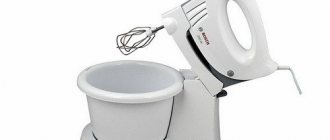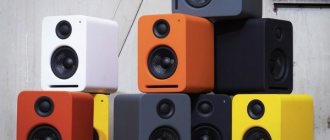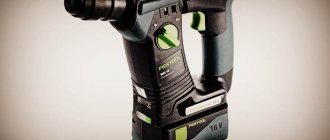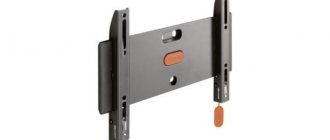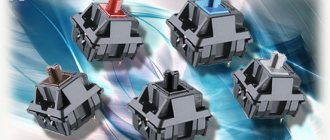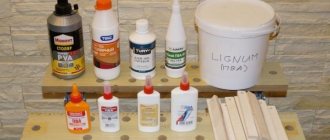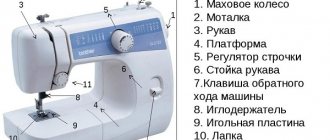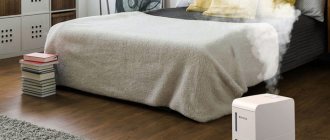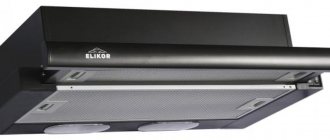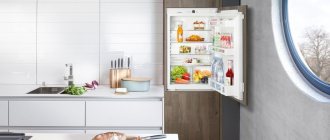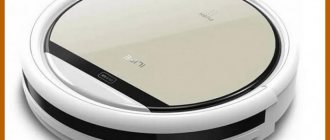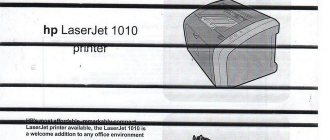Additive technologies have been reaching the masses for a long time: institutes and research centers have been closely working on them since the 80s, and now the moment has come when you can touch high-tech and master 3D printing right at home. You don’t even have to break the bank to do this: prices for 3D printers are on par with average smartphones. Let's figure out how it works and what opportunities open up for makers and DIY enthusiasts!
Everything for 3D printing ❯
Why do you need a 3D printer?
The printer will be very useful for DIY engineers. You no longer have to look for a universal housing for your project and then drill additional holes in it. 30 minutes of design, a few hours of printing - and you already have a ready-made case that is ideal for your device. Does an assembly of 5 shields fit anywhere? Forget about such problems.
The printer will definitely help in repairing things around the house. Everyone has had a situation in their life when they had to throw away something even though only one plastic part was broken. With the help of 3D printing, you can easily replace rare plastic parts in devices that are difficult to find separately.
Until you learn how to model plastic parts yourself, you can simply download them on the Internet. There are many sites with millions of ready-made free models that users freely share. We have dedicated a separate article to searching for models.
What are the types of 3D printers?
There are several main types of 3D printers, which differ radically in their operating principles.
FDM (Fused Deposition Modeling) technology
The most common type is FDM printers with layer-by-layer deposition of plastic. They work due to a movable print head with a heating element. Plastic is fed into it in the form of a rod, which melts and is squeezed out in liquid form onto the printing table. In this case, the plastic is blown by a fan and instantly hardens, and the head begins to squeeze out a new layer on top of the hardened one.
SLA technology (Stereolithography Apparatus)
SLA printers work on the basis of stereolithography: instead of plastic, a special photopolymer resin is used, which hardens under the influence of ultraviolet rays. To print, resin is filled into a vat, at the bottom of which there is a display with ultraviolet pixels. A drawing of the bottom layer of the model is displayed on it within a few seconds. In this case, the resin above the display hardens into the displayed pattern and then sticks to a special movable table on top. After this, the table with the first layer is raised, and polymerization of the next layer occurs in the resin.
SLS (Selective Laser Sintering) technology
SLS printers use selective laser sintering technology, which uses special plastic powder. During the printing process, a thin layer of powder is poured in and the printer lasers it to harden the layer to match the model. Next, the next layer of powder is poured and fused with the previous one - and so on in a circle. In the end, all that remains is to clean the finished part from any remaining powder, which can then be reused.
Technology comparison
Each type of 3D printer has its own advantages and disadvantages.
- SLS printers are large and require expensive raw materials. They are often used in high-tech production for one-piece parts.
- SLA printers are much more widespread. An ultraviolet display improves accuracy, but working with toxic photopolymer resin at home is difficult.
- FDM printers are the most popular among hobbyists. A plastic rod is much cheaper than a special powder or photopolymer resin. However, to print complex geometry on such a printer, you will have to take care of auxiliary supports. And the printing speed is on average lower than with other technologies. But FDM printers are the easiest and safest to maintain.
Classification of 3D printers (7 3D printing technologies)
There have already been articles on the hub about printing technologies that use 3D printers, but in this article I tried to approach the issue systematically, so that the reader would have a clear picture in his head about what principles are inherent in 3D printing technology, what materials are used and ultimately As a result, what technology is best to use to obtain a certain result, be it a titanium part, or a master model for subsequent replication. The article is based on the book Fabricated: The New World of 3D printing
I. Those who squeeze or pour or spray something
1) FDM (fused deposition modeling)
I won’t go into detail about printers that extrude some material layer by layer through a dispenser nozzle, we know everything about them. All makerbot-like printers + Stratasys printers + various culinary printers (use icing, cheese, dough) + medical ones that print with “living ink” (when any set of living cells is placed in a special medical gel which is then used in biomedicine)
2) Polyjet technology
, was invented by the Israeli company Objet in 2000. They were bought by Stratasys in 2012. The essence of the technology: photopolymer is shot in small doses from thin nozzles, as in inkjet printing, and immediately polymerizes on the surface of the manufactured device under the influence of UV radiation. An important feature that distinguishes PolyJet from stereolithography is the ability to print with a variety of materials. Advantages of the technology: a) layer thickness up to 16 microns (blood cell 10 microns) b) prints quickly, since the liquid can be applied very quickly. Disadvantages of the technology: a) prints only using photopolymer - a highly specialized, expensive plastic, usually sensitive to UV and quite fragile. Application: industrial prototyping and medicine
3) LENS (LASER ENGINEERED NET SHAPING)
The material, in powder form, is blown from a nozzle and struck by a focused laser beam. Part of the powder flies past, and the part that falls into the focus of the laser is instantly sintered and layer by layer forms a three-dimensional part. This is the technology used to print steel and titanium objects. Since before the advent of this technology it was possible to print only objects made of plastic, no one took 3D printing particularly seriously, and this technology opened the door for 3D printing to the “big” industry. Powders of different materials can be mixed to form alloys on the fly. Application: e.g. titanium blades for turbines with internal cooling channels. Equipment Manufacturer: Optomec
4) LOM (laminated object manufacturing)
Thin laminated sheets of material are cut using a knife or laser and then sintered or glued together into a three-dimensional object. Those. a thin sheet of material is laid, which is cut along the contour of the object, thus creating one layer, the next sheet is laid on it, and so on. After this, all sheets are pressed or sintered. This is how 3D models are printed from paper, plastic or aluminum. To print aluminum models, thin aluminum foil is used, which is cut along the contour layer by layer and then sintered using ultrasonic vibration.
II. Those who sinter or glue something
1) SL (Stereolithography)
Stereolithography. There is a small bath with liquid polymer. The laser beam passes over the surface, and at this point the polymer polymerizes under the influence of UV. After one layer is ready, the platform with the part is lowered, the liquid polymer fills the void, then the next layer is baked, and so on. Sometimes the opposite happens: the platform with the part rises up, the laser is accordingly located below... After printing using this method, post-processing of the object is required - removal of excess material and support, sometimes the surface is ground. Depending on the required properties of the final object, the model is baked in the so-called. ultraviolet ovens. Photopolymer is often toxic, so when working with it you need to use protective equipment and respirators. Maintaining and maintaining such a printer at home is difficult and expensive. Advantages: fast and accurate, accuracy up to 10 microns. To sinter the photopolymer, a laser from a Blu-ray player is sufficient, thanks to which cheap and precise printers working using this technology appear on the market (eg Form1).
2) LS (laser sintering)
Laser sintering. Similar to SL, but instead of liquid photopolymer, powder is used, which is sintered by laser. Advantages: a) it is less likely that the part will break during the printing process, since the powder itself acts as a reliable support b) materials in powder form are quite easy to find on sale, including: bronze, steel, nylon, titanium Disadvantages: a) the surface is porous b) some powders are explosive, so they must be stored in chambers filled with nitrogen c) sintering occurs at high temperatures, so the finished parts take a long time to cool, depending on the size and thickness of the layers, some objects can cool down to one day.
3) 3DP (three dimensional printing)
The technology was invented in 1980 at MIT by student Paul Williams, the technology was sold to several commercial organizations, one of which was zCorp, now absorbed by 3D Systems. An adhesive is applied to the material in powder form, which binds the granules, then a fresh layer of powder is applied on top of the glued layer, and so on. The output, as a rule, is sandstone material (similar in properties to gypsum) Advantages: a) since glue is used, paint can be added to it and thus print colored objects b) the technology is relatively cheap and energy efficient c) can be used at home or office c) you can print using glass powder, bone powder, recycled rubber, bronze and even sawdust. Using a similar technology, you can print edible objects from sugar or chocolate powder, for example. The powder is glued together with a special food glue; dye and flavoring can be added to the glue. As an example, new 3D printers from the company 3D systems, which were demonstrated at CES 2014 - ChefJet and ChefJet Pro Disadvantages: a) the output is a rather rough surface, with a low resolution of ~ 100 microns b) the material must be post-processed (baked) in order give it the necessary properties.
I hope the material will be useful to you. Additions are accepted.
How to prepare a seal
The process from the birth of an idea to the release of a finished plastic part is not difficult - a student can handle it. We've broken it all down in our 3D printing guide using the Flying Bear Ghost 5 printer as an example, and here we'll show you the general principle.
Original model
First you need to create or download a 3D model of the future part. As a rule, sources are stored in STL format, which describes the polygonal structure of the model in the form of many triangles. But you won’t be able to immediately send such a file to the printer: for successful printing, you first need to break the detailed 3D model into layers that the printer can handle.
Slicing
The program for slicing models (slicer) will require very little from you - enter the model of your printer and set the printing settings: layer thickness, percentage of internal filling of the part, auxiliary supports, and the like. Based on this data, the slicer will automatically prepare a special code for the printer - G-Code, which describes how to move the print head, to what temperature it should be heated and at what speed to extrude the plastic in order to obtain the desired model layer by layer. Then all that remains is to load this code into the 3D printer and be patient until the end of printing.
The entire process of preparing a model is clearly illustrated by the program and is provided with intuitive tips for novice users. In general, slicing is not as scary as it is made out to be!
Treatment
After the model is ready, it can be further processed with sandpaper or a chemical solution. This will smooth out any unevenness between layers and the piece will look exactly like the factory one. There are many life hacks on the Internet that will help minimize the flaws of the model and give it an improved look.
Printing consumables
The properties of a printed item largely depend on the raw material. As we have already said, FDM 3D printers use plastic filaments as consumables, and you have a huge scope for experimenting with different types of plastic.
- PLA plastic lends itself well to extrusion and allows you to print complex shapes at relatively low head operating temperatures of 190 °C. The biodegradability of PLA plays into the hands of the environment, but at the same time, things made from it are not very durable.
- PETG plastic is stronger than PLA, but is also well suited for printers with temperatures around 200 °C. Varieties of PET plastic are familiar to you from bags and plastic soda bottles.
- ABS plastic has higher strength compared to other types. However, for high-quality printing from ABS plastic, your printer will need an increased extrusion temperature of about 250 °C and a table heated to 120 °C, so not every model can support it.
- HIPS plastic is similar in temperature properties to ABS, but has low agglomeration with it and is easily removed with an organic solvent. Because of this, HIPS plastic is often used to print composite models and supports for ABS models.
- Wood plastic is made with the addition of wood dust. Finished models made from it do a good job of imitating wood not only in their appearance, but also in their smell.
Plastic spools are found on sale at every step - it will not be difficult for you to choose suitable consumables and combine different properties and colors of parts when printing.
Entry-level FDM 3D printers. Price: 15.000 – 30.000 ₽
These are the cheapest 3D printers, which are represented by simple models; we recommend these models as the best 3D printers from budget options. The printing process is based on layer-by-layer FDM (Fused deposition modeling). The plastic filament is melted and then applied in thin layers to create the model. Budget printers are equipped with one nozzle for squeezing out filament. Recently, SLA DLP printers are appearing more and more often, which will very soon be equal in cost to FDM. For example, Anycubic Photon Zero is a budget photopolymer LCD 3D printer
They print slowly, often take many hours to reproduce a single object, and they print on a limited range of materials.
- Advantages: low cost, simple printers are an ideal option for an initial introduction to the 3D printing process. They are usually relatively easy to install and configure.
- Disadvantages: 3D printers of this type are not equipped with a closed chamber, although the design looks reliable, often even a steel frame is used. The absence of a closed body immediately imposes a limitation on the use of types of plastic: PLA, SBS, PETG - perhaps this is all they can print without using a fair amount of shamanism.
- Key Features and Supplies: Most printers of this type come with basic software, but some come without any software at all, forcing you to look for open source solutions. The printing process typically uses 1.75mm filament, which is widely available in a wide range of colors in spool form. Capricious materials with a high melting point and thermal shrinkage coefficient ABS, HIPS, NYLON, and others - theoretically you can set up printing, but you will have to invent a closed housing, upgrade the extruder, etc.
